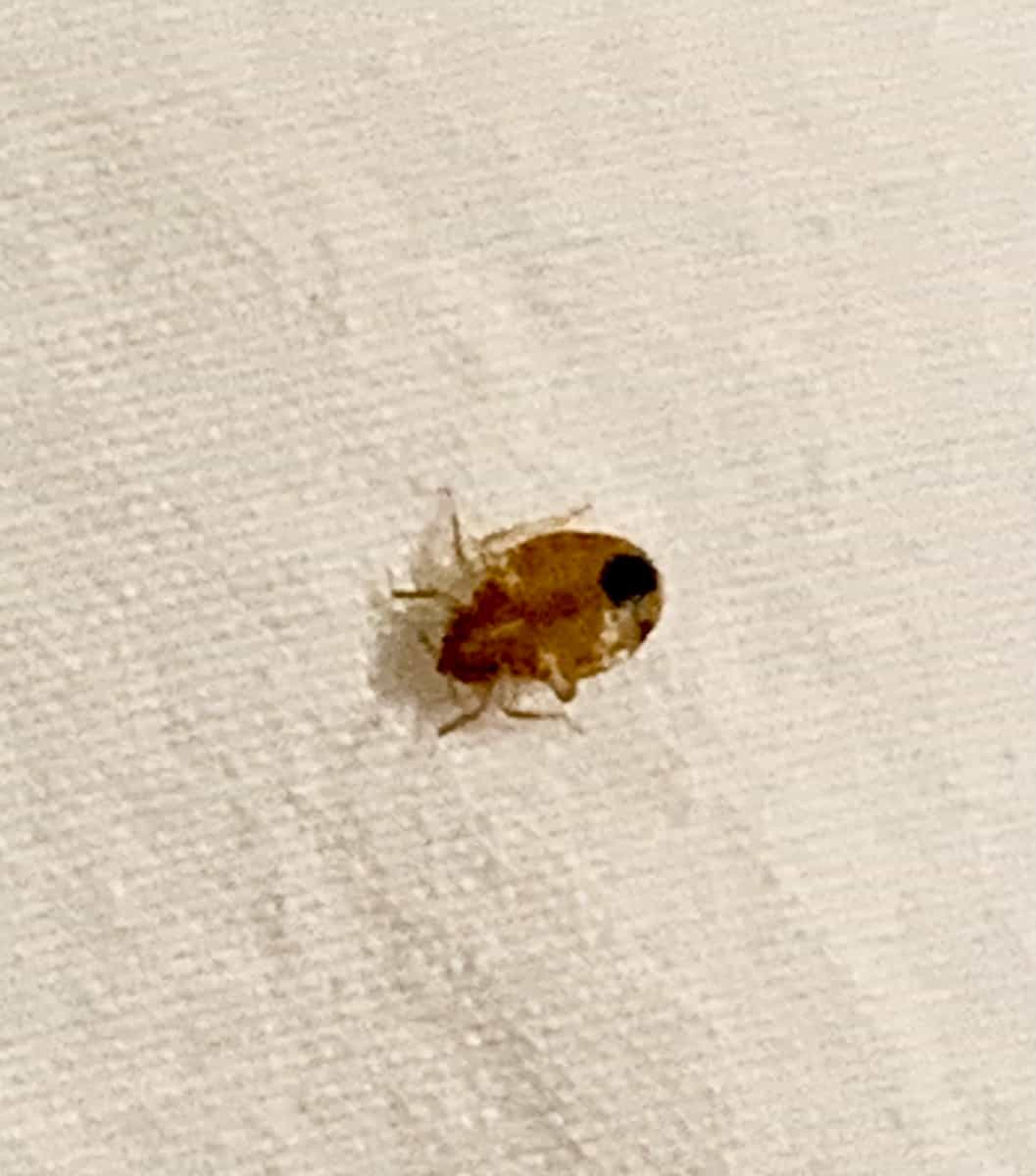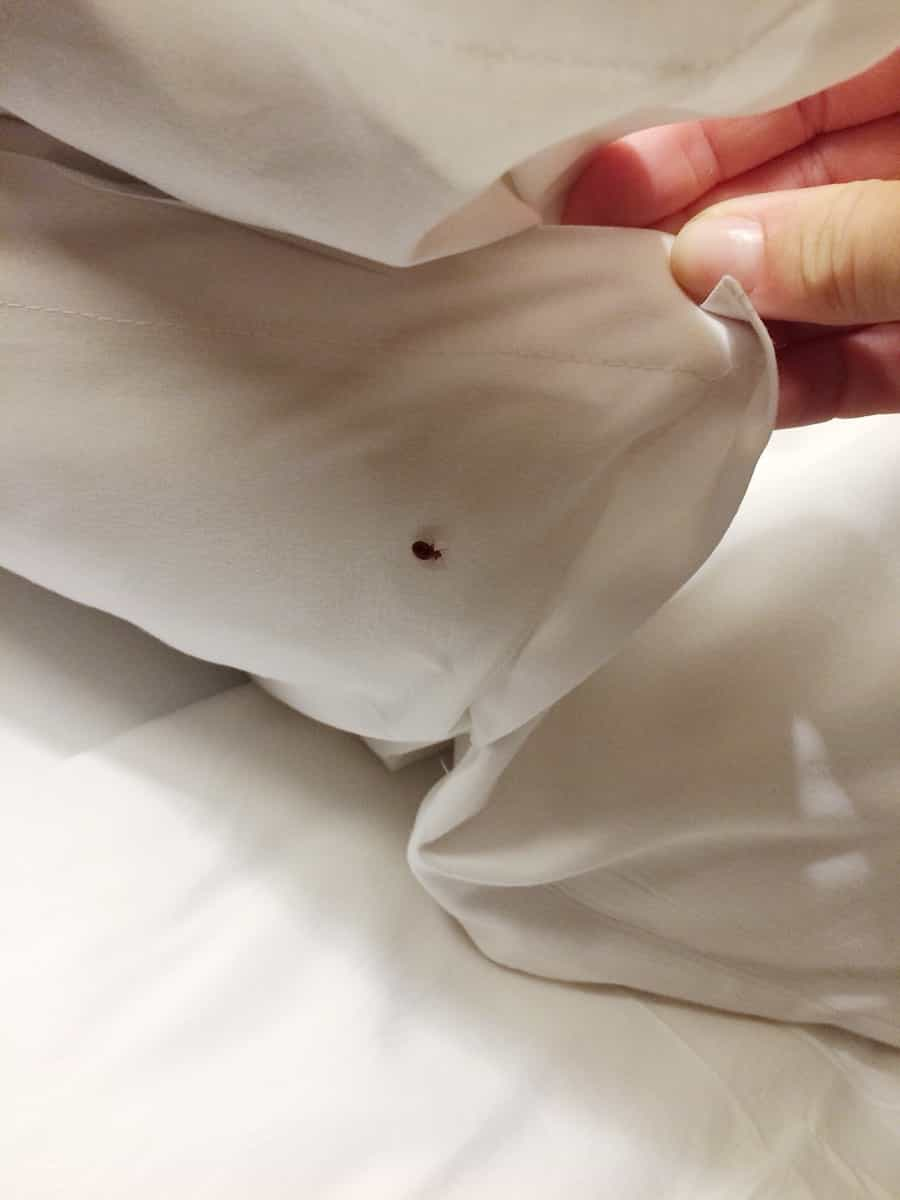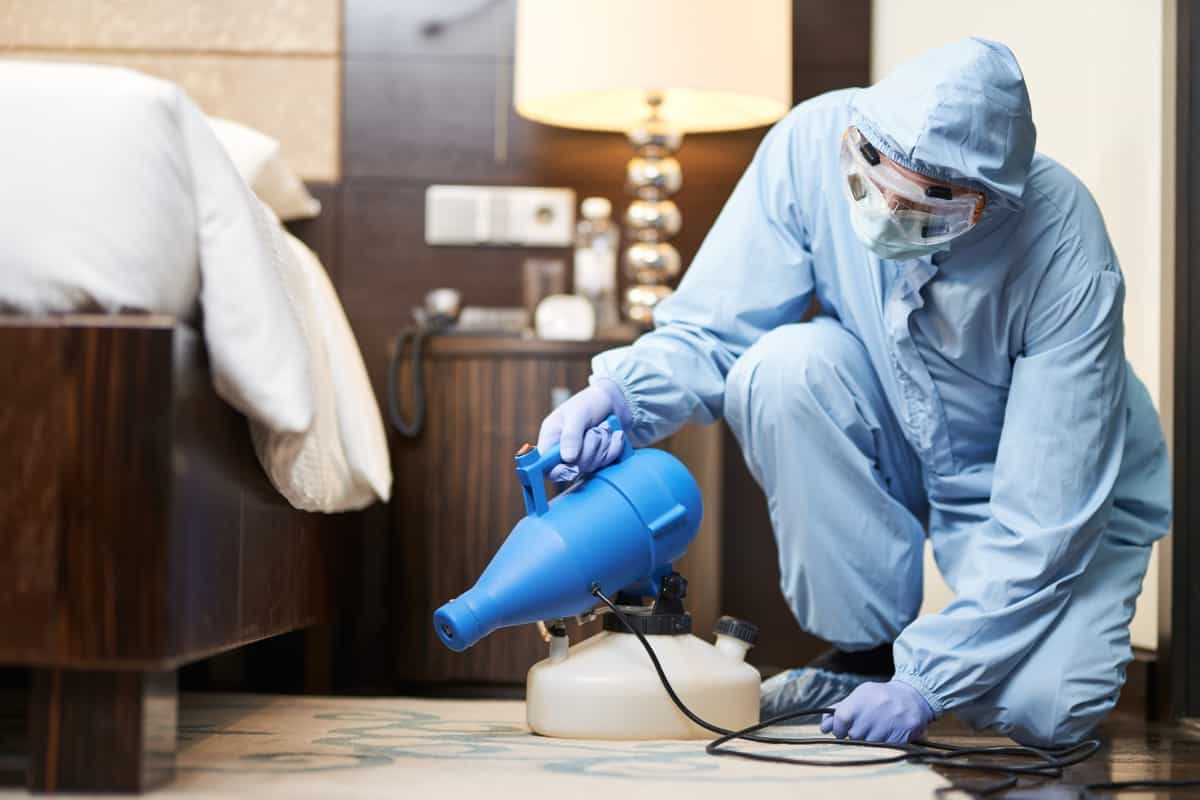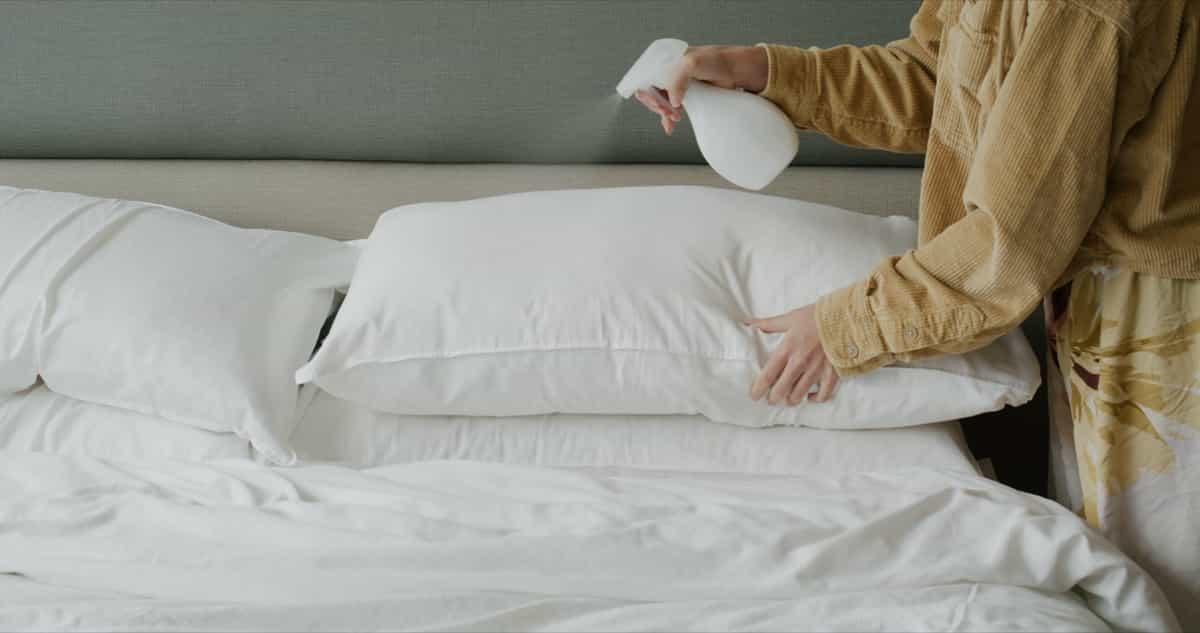Bed bugs (Cimex lectularius) may be small in size, but they can cause big problems. The occurrence of bed bugs can greatly affect your mental health and well-being. The primary reason for controlling bed bugs is the impact they have on our well-being. Bed bugs can cause itching, redness, and even allergic reactions in some individuals.

What Chemical Kills Bed Bugs and Their Eggs
Pyrethrin
It is a naturally occurring insecticide derived from the chrysanthemum flower. It has been used for centuries to control various pests, including bed bugs. When exposed to Pyrethrin, bed bugs become paralyzed and eventually die. This makes it an excellent choice for immediate relief from infestations.
The advantage of using Pyrethrin is that it breaks down quickly in the environment, minimizing any potential harm to humans or pets. To effectively use Pyrethrin against bed bugs, thorough application is essential. Focusing on areas where they hide and breed, such as mattress seams and cracks in furniture, will yield optimal results.
Permethrin
Permethrin is a powerful chemical that has been proven effective in killing bed bugs and their eggs. It belongs to the pyrethroid family of insecticides, which are widely used for pest control purposes. The main advantage of Permethrin is its residual effect, meaning it continues to work long after it has been applied.
This makes it an excellent choice for treating infested areas such as mattresses, furniture, and carpets. When using Permethrin, it is important to follow the instructions carefully and take necessary precautions. Protective clothing should be worn during application to minimize exposure. Additionally, treated surfaces should be avoided until they have dried completely.
Deltamethrin
Deltamethrin is a powerful chemical used to kill bed bugs and their eggs effectively. The main advantage of using deltamethrin is its long-lasting residual effect. Once applied, it can continue killing bed bugs for several weeks or even months, providing extended protection against infestations. Deltamethrin can be found in various forms, such as sprays, dusts, or concentrated solutions.
It can be applied directly onto surfaces where bed bugs are known to hide, such as mattresses, cracks, and crevices. It’s worth noting that while deltamethrin is highly effective against bed bugs, some populations have developed resistance over time. Therefore, it’s recommended to rotate different chemicals or use a combination approach for optimal results in severe infestations.
Cyfluthrin
Cyfluthrin is a powerful chemical that has proven to be effective in killing bed bugs. It belongs to the pyrethroid family of insecticides and works by targeting the nervous system of these pesky pests. When applied correctly, Cyfluthrin can provide long-lasting protection against bed bugs.
In case you missed it: How to Use Glue Traps for Bed Bugs: Get Rid of Bed Bugs with Glue Traps With Simple Steps

It has a residual effect, meaning it remains active for an extended period, ensuring that any newly hatched bed bugs coming into contact with treated surfaces will also be eliminated. While Cyfluthrin is effective against bed bugs, it’s essential to remember that proper application techniques are crucial for optimal results.
Phenothrin
Phenothrin is a powerful chemical that is effective in eradicating bed bugs and their eggs. The main advantage of using phenothrin is its ability to kill bed bugs on contact. This means that as soon as the insects come into contact with surfaces treated with phenothrin, they will be eliminated. Furthermore, phenothrin has low toxicity levels for humans and pets when used based on label instructions. However, it’s always important to take precautions such as wearing protective clothing and avoiding direct skin contact during application.
Esfenvalerate
The advantage of Esfenvalerate is its low toxicity to humans and pets when used properly. However, it’s important to follow the label instructions and take appropriate precautions carefully. When using Esfenvalerate or any other chemical treatment for bed bug control, it’s crucial to remember that thoroughness is key. In addition to using chemicals like Esfenvalerate, it’s important to incorporate other methods such as vacuuming regularly, laundering infested bedding at high temperatures, and sealing cracks in walls or furniture where bed bugs may be hiding.
Hydramethylnon
It belongs to the class of insecticides known as chitin synthesis inhibitors. When bed bugs come into contact with hydramethylnon, it disrupts their ability to produce chitin, a vital component of their exoskeleton. Without a properly formed exoskeleton, these pests are unable to survive. Hydramethylnon is relatively safe for humans and pets when used according to label instructions.
However, it is always recommended to take precautions such as wearing gloves and avoiding direct skin contact during application. It offers a reliable solution for eliminating bed bugs and preventing infestations from recurring. Its unique mode of action makes it highly effective in eradicating these persistent pests from your home.
Chlorpyrifos
Chlorpyrifos is a powerful chemical that has been widely used for years to control a variety of pests, including bed bugs. It belongs to the organophosphate class of insecticides and works by troublemaking the nervous system of these pesky critters. The advantage of chlorpyrifos is its effectiveness in killing adult bed bugs and their eggs. However, it’s important to note that chlorpyrifos must be applied with caution due to its potential toxicity. Proper safety actions, such as wearing masks and keeping children and pets away from treated areas, should always be followed when using this chemical.
Diazinon
When applied, Diazinon penetrates the exoskeleton of bed bugs, reaching their vital organs and causing paralysis and eventual death. Its residual effect also ensures that any unhatched eggs are eliminated, preventing future infestations. The advantage of using Diazinon is its versatility in application methods.
In case you missed it: How to Control Boxelder Bugs Naturally: DIY Homemade Sprays for Controlling Boxelder Bugs

It can be used as a liquid spray or dust powder, allowing for easy targeting of specific areas where bed bugs hide, such as cracks and crevices in walls or furniture. However, it’s important to note that Diazinon has been phased out for residential use due to its potential health risks. While it was once widely available for consumer purchase, it is now primarily used by licensed pest control professionals who follow strict safety protocols.
Carbaryl
It works by disrupting the nervous system of bed bugs upon contact or ingestion. It targets their nerve cells, causing paralysis and eventually leading to their demise. Not only does it eliminate adult bed bugs, but it also proves lethal for their offspring, ensuring that future generations are eradicated as well.
The advantage of using Carbaryl is that it provides both immediate results and residual activity. Once applied correctly, this chemical can continue working for an extended period, effectively preventing any resurgence of these blood-sucking pests. It’s important to follow the instructions and wear a protective cloth when handling Carbaryl or any other pesticide.
Frequently Asked Questions (FAQ) on Kill Bed Bugs Using Chemicals
Is It Safe to Apply Chemicals to Kill Bed Bugs in My Home?
When used according to label instructions by trained professionals or homeowners who follow safety guidelines properly, most of these pesticides pose minimal risk to humans or pets.
Do I Need Special Equipment for Applying Chemicals to Kill Bed Bugs?
Some products require specialized equipment, such as sprayers, for proper application, while others come in ready-to-use formulations that can be applied directly.
In case you missed it: How to Get Rid of Stink Bugs: 6 DIY Homemade Spray Recipes for Controlling Stink Bugs

How Long Does It Take for Bed Bugs Killing Chemicals to Work?
The effectiveness of each chemical varies depending on factors such as concentration, exposure time, temperature conditions, and level of infestation, but generally speaking, treatments typically take several weeks from start to finish.
Conclusion
Bed bugs are those tiny pests that love to invade our homes and disrupt our sleep. The bed bug can cause intense itching and discomfort. Dealing with a bed bug infestation is time-consuming and costly. Additionally, you’ll have to wash all bedding and clothing at high temperatures or even discard heavily infested items.
- Beneficial Insects in Pest Management
- Natural Solutions for Pest Control in Flower Gardens
- Types of Fungicides Used in Agriculture
- Common Issues in the Fruit Development Stage of Pomegranate Farming
- Fruit Development Issues in Papaya: Easy Solutions and Treatment
- Soil-Borne Diseases and How to Protect Your Plants
- Practices to Prevent Disease Spread in the Garden
- From Wilted to Thriving: How to Treat Root Rot Naturally in Houseplants
- Natural Remedies to Cure Brown Spots on Fig Tree Leaves